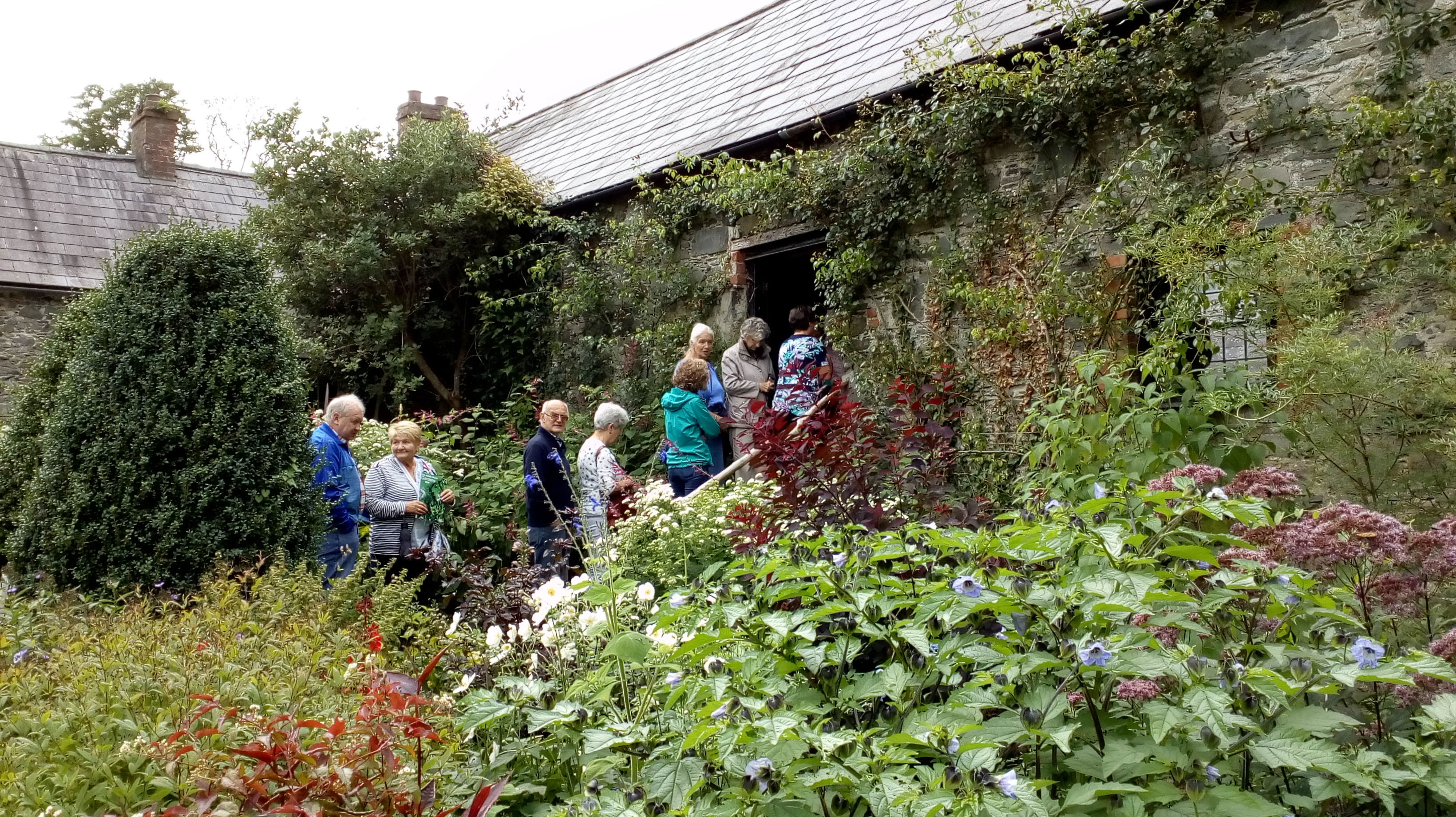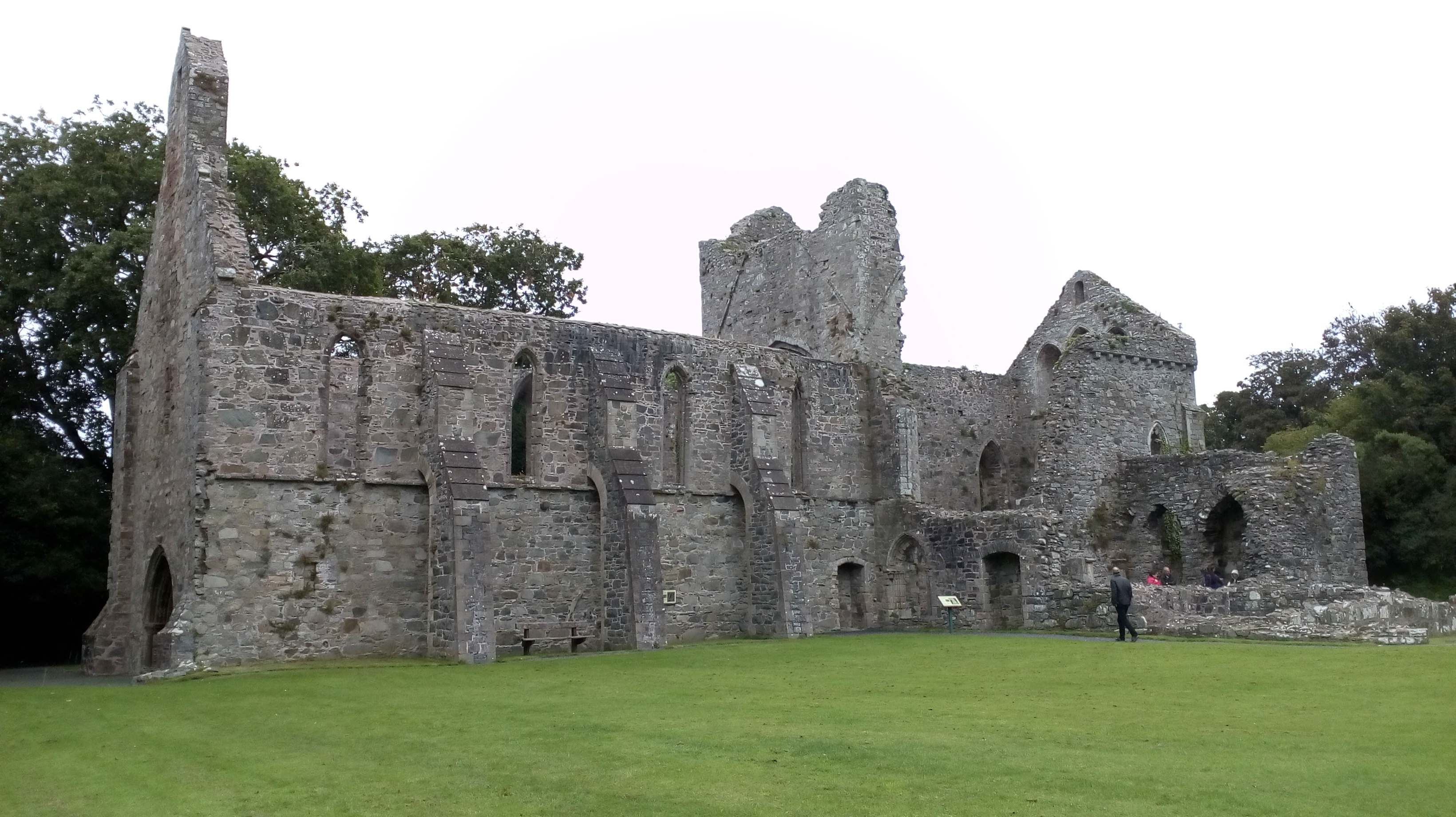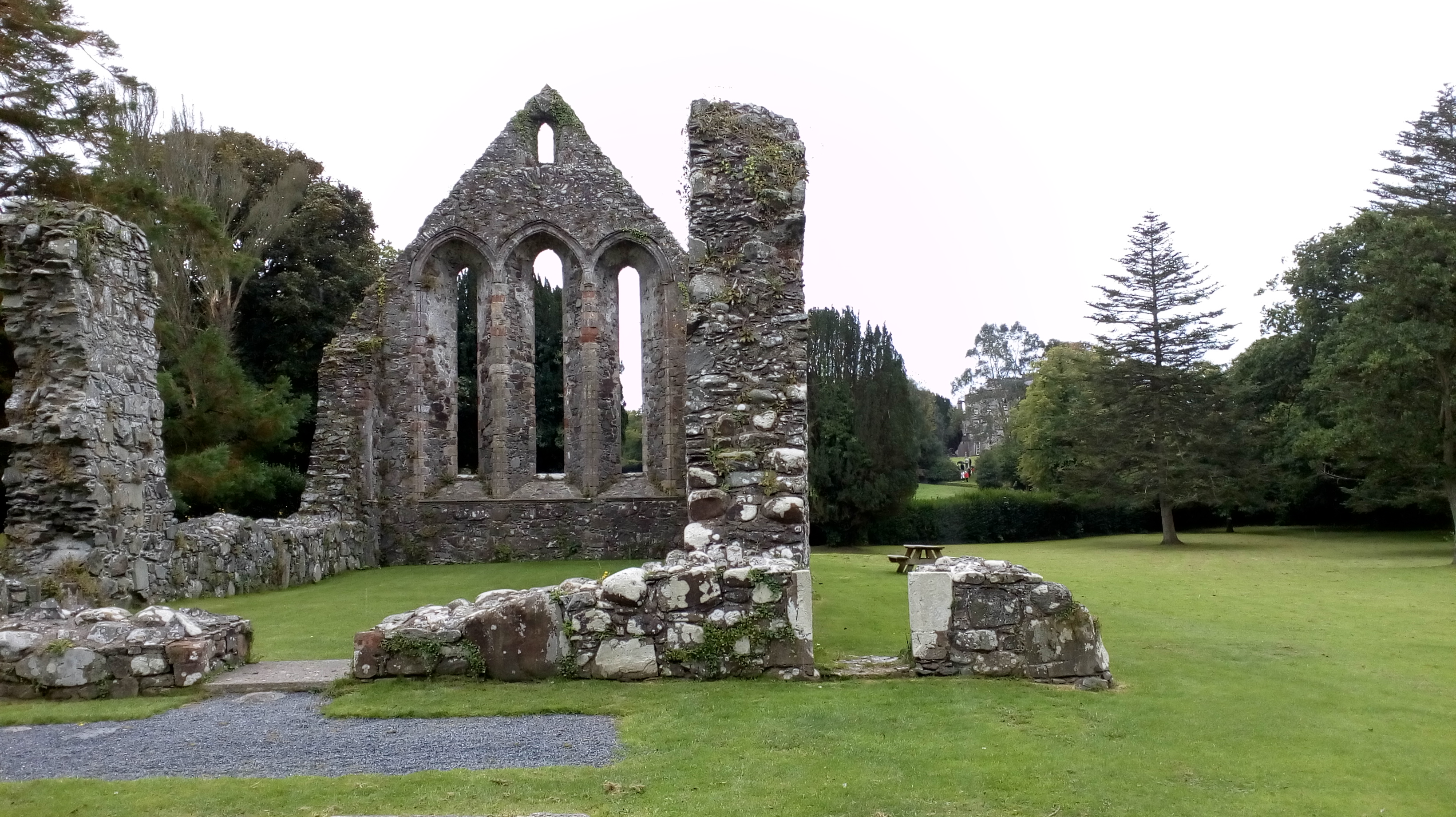Grey Abbey
Today is European Heritage Open Day, when a lot of things that aren’t usually open to the public open their doors. And a lot of places that ARE open to the public jump on the bandwagon to pump up their traffic. The pdf for this event lists 300 properties open in all six counties of Northern Ireland.
Grey Abbey House opened today as a fundraiser for Woodlands Trust. It isn’t clear what, if any, tie there is to EHOD. But we decided to go because we’d never been to the famous Grey Abbey, a Cistercian monastery built in the 1100s that is on the grounds of Grey Abbey House.
The house itself wasn’t open. On offer was a walk around its grounds--the orchard, the parkland, the bridle trails. The house is not very attractive. This is one of the more flattering angles.

This is the granary, where tea was served.

And this is the highly impressive Grey Abbey--just one section of it.

Here is another section. My photos really don’t do it justice.

We visited an exhibition centre near Grey Abbey where the history of how the Ards Peninsula came to be owned by the Hamiltons and the Montgomerys was a bit sketchy. Here’s a similarly sketchy account from the Ulster Scots website:
"Grey Abbey and many of the surrounding townlands have been in the possession of the Montgomery family since 1607, when Sir Hugh Montgomery (later 1st Viscount Montgomery of The Great Ards) arrived in County Down from lowland Scotland. Hugh Montgomery, together with another entrepreneurial Scotsmen, James Hamilton, successfully planted thousands of Scottish settlers in the Ards and North Down. These hard-headed businessmen made the plantation of North Down and Ards happen, where English armies had failed.”
Well it would be very interesting to hear the O’Neill version. It was O’Neill land before the series of wars that led to the Flight of the Earls.
You can imagine a similar (fictitious) narrative in the plantation South: "Plantation owner Earl Bonneville successfully turned this flat pineland into one of the most productive cotton plantations in the South.” It’s just EASIER if you don’t have to think about slaves or the manner in which massive tracts of land were assembled.
9-8